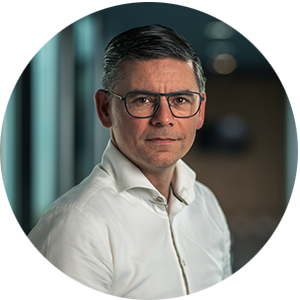If you come to us asking for a customised ULD, it’s probably because your cargo is specialised and there’s no perfect fit solution already on the market. But what goes on behind the scenes here when you submit such a request, and what sort of things do we want to know from you?
Let’s look at the four steps that VRR takes between receiving your request for a custom-built air cargo container and sending you a commercial and technical proposal.
Step 1: Understand fully your logistical challenge
Some customers have a specific product design in mind when they first approach us. Others are less clear about their requirements; they know only that they can’t find a standard solution that meets their needs. Whichever camp you fall into, we have to understand the bigger picture before we even start considering designs.
The bigger picture often centres around a significant logistical challenge: the cargo that needs to be transported is huge, heavy, fragile or sensitive to temperature changes, vibration or dust particles.
Or maybe your needs concern a specific functionality that standard solutions don’t offer.
Take, for example, the international inspection team that ordered a customised multi-modal rapid deployment container from us. They required a ULD that could be loaded onto civil and military aircraft (even though they have different cargo loading systems) and a modular interior to accommodate their ever-changing mobile lab. Now that was a challenge…
To completely understand the reason for your request, we ask questions. A lot of them. We begin by getting details of the cargo itself and why you want to transport it by air rather than sea, road or rail. Then we move onto the unique or unusual conditions that require a customised ULD. Are you delivering the cargo to a particularly remote or hostile location, for example?
Step 2: Determine the basic characteristics of the ULD
Once we understand the logistical challenges that you’re facing, we decide what type of ULD would create the most convenient method of transport for your cargo. It’s important to do this early in the process because there are so many aspects to a ULD that affect the final design, including fundamentals such as:
- ULD type (at least 18 categories)
- base size (at least 11 dimensions)
- contour (at least 19 different shapes)
- weight (does the base need to be reinforced or extra light?)
- aircraft type (narrow- or wide-bodied, civil or military?)
- loading position (upper- or lower deck or both?)
- airworthiness regulations (that relate to the product)
Having nailed down the basics, we turn our attention to the finer details.
Step 3: Refine the ULD design to get a best fit
Now we have an idea of the basic ULD, we dive deeper into your non-standard requirements. We do this hand-in-hand with you and sometimes also with our suppliers and technical partners. Co-creation is at the heart of everything we do at VRR, so your input is vital here. It’s at this stage that our designers, engineers and technicians pull out all the stops to design the perfect-fit ULD for you.
The type of product details we’ll discuss with you vary from handling and temperature to durability and safety, such as:
- Will the ULD need forklift pockets, straps, a ramp or something else?
- Does it need to be climatised to maintain a constant temperature?
- Do you need fireproof materials?
- Do you need interior fittings such as adjustable shelving?
- What about additional safety and security features?
We also consider the development process. It’s quite possible that certain aspects of the design will need to be tested in a real-life setting, so this is included in our design plans. And all the time that we’re figuring out the details, we’re checking to see if there’s a standard solution that already fulfils your logistical requirements.
In the last few decades, VRR has designed, engineered and manufactured dozens of certified ULDs, so we sometimes discover that one of our standard ULDs is the ideal solution. For instance, waiting hours for the batteries of your cool containers to recharge could be a headache for you. In which case, we’d recommend our cool containers with a removable rechargeable battery that can be taken out and replaced with a fully charged battery in a matter of seconds.
Discovering that we already have the perfect-fit ULD for you avoids the need for a development phase, and that cuts down the lead time (and the cost) dramatically.
Step 4: Draft a technical and commercial proposal
Once we have a detailed overview of your needs and the basic design of the customised ULD, we draw up the technical and commercial proposals.
The commercial proposal sets out what we can do for you and how we can solve your logistical challenge. It demonstrates our conceptual solution and gives a clear and accurate picture of pricing and timelines.
The technical proposal outlines the technical specifications of the ULD. It details all the basic characteristics such as type, base size and contour, and it lists all the customised features that make this ULD unique.
We email these proposals to you, answer any questions that you may have, and look forward to getting the green light from you.
Thinking of ordering a custom-built container?
As you can see, VRR has a streamlined process for dealing with requests for customised containers. Perhaps yours will be the next one that we design. Let’s talk about your ideas.












